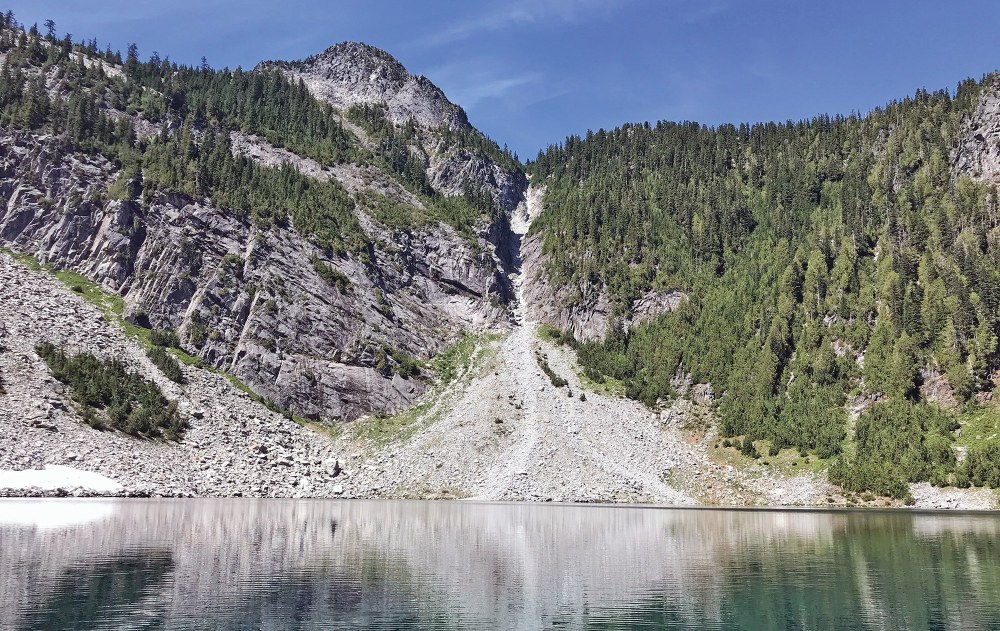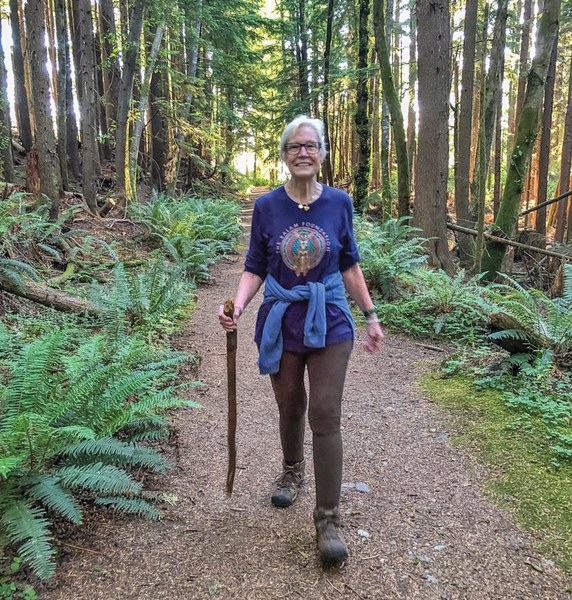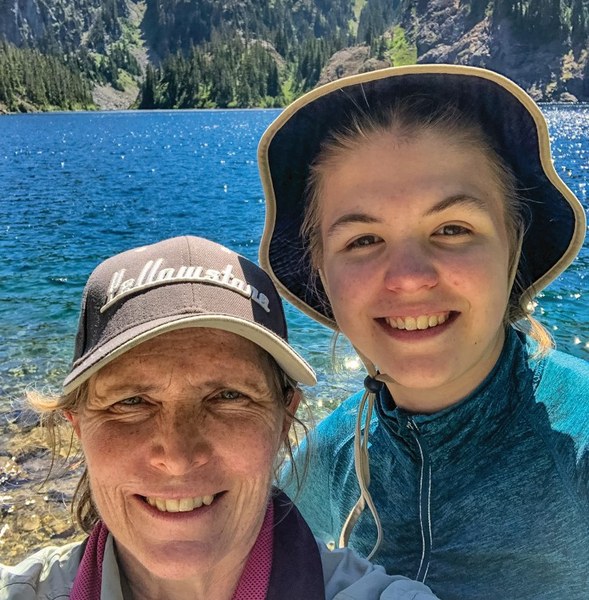
After 40 years of hiking, I’m still learning new things about what recreation looks like for myself and others. As an experienced health and wellness coach, part of my job is to help individuals reach their outdoor goals safely. I adjust my mentoring style based on each individual because the process to achieve a desired objective varies depending on who is learning.
I’ve recently acquired two new hiking partners: my 20-year-old daughter who is relatively new to hiking and adores visiting alpine lakes, and a senior novice hiker, former triathlon racer, and two-time survivor of lung cancer. While mentoring my daughter and senior friend, I’ve witnessed the value in embracing a beginner’s mindset. Whether starting from scratch or starting from setback, we’re all starting somewhere. How we choose to start will define the journey toward our goals.
What’s it like to start from scratch?
When trying something brand new, it’s important to set reasonable expectations for your body. Proper warm up, pacing, nutrition intake, and progress look different for everyone. As you begin your recreation journey, pay attention to your body’s needs. Listening to your body is essential for staying safe.
One example of setting reasonable expectations is setting an appropriate pace, and appropriate pacing varies depending on activity. When climbing Mt. Rainier, you must be able to carry a heavy pack to Camp Muir in under six hours if you want to reach the summit. But such a “do or die” approach on casual hikes is likely to backfire, especially with a beginner.
On my daughter’s first hikes, she would power ahead at a quick pace, only to drop back when fatigue set in. Rather than correct her speed, I let her learn from her own experiences. A summer later, she now understands that a steady pace – aka “Mom’s way” – results in sustained energy. On our first hike to Annette Lake in early June, she handled pacing like a pro. She just needed to give herself permission to start slowly.
There is beauty in being a beginner – take advantage of it! Nothing compares to the excitement of trying something for the first time. Just remember to be patient with yourself, and don’t forget that your number two goal (after being safe) is to have fun.
 Cathy hiking the May Valley Loop.
Cathy hiking the May Valley Loop.
What’s it like to start from a setback?
Returning to recreation after a long pause can be challenging. As our bodies grow and change, what we need to achieve recreational objectives can change as well. My friend Cathy assumed from her triathlon days that activity only counted if you pushed yourself. Hard. But hard is not sustainable, especially when starting again. And needless to say, recreation looks a little different when you’ve survived lung cancer twice. Activities are not races, and it’s okay – actually, encouraged – to start slowly until your muscles, joints, and lungs warm up. Then, you can vary your pace as you feel comfortable, always aiming to stay conversational to avoid wearing yourself out.
I’ll never forget the first hike Cathy and I did together. We attempted Tradition Lake Loop on Tiger Mountain. She was so excited and nervous, she hardly slept the night before. After a comfortably paced hike, we returned to the parking lot and Cathy was exuberant: she had completed the hike without any lung issues. Being kind to our bodies goes a long way.
Another component of understanding our bodies’ needs as beginners is proper hydration and fueling. During her hiking progression, Cathy experienced a migraine on one hike, thirst on another, and intestinal issues on a third before eventually realizing that she wasn’t consuming enough water and food. It’s natural to make these mistakes when first starting out, and it’s up to us to listen to our bodies, learn from these mistakes, and adjust appropriately. Learning when and how to fuel will build your recreation autonomy and confidence.
Now Cathy arrives at the trailhead with a day pack containing snacks, migraine medicine, coconut water, and a protein shake. When she returns to the car smiling after a seven-mile hike with 1,600 feet of elevation gain, I know she now has the tools to achieve harder goals like reaching alpine lakes. Hearing her refer to the mountains as her “happy place” is especially satisfying. Everyone, regardless of age, physical capability, or skill level, deserves to feel at home in the mountains.
 Courtenay and her daughter Brooke at Rachel Lake.
Courtenay and her daughter Brooke at Rachel Lake.
Identifying your why
Purpose is fluid. As we age, our bodies’ capabilities change; as we explore new activities, our appreciation of the natural world shifts; as we take on life’s challenges, our passions and expectations adjust. The why behind what we do is in continuous flux.
I’ve coached climbers in the past whose goals were to achieve peak physical condition so they could reach the summit. Their why involved enjoying the climb without slowing anyone down. This has historically been my why too. But in recent years, my why has expanded to embrace other things. Rather than racing up peaks, I pay attention to birdsong and raging rivers. I pick berries and take time to identify flowers. I pause to shoot photos of my dog, the landscape, the foliage, or anything unique, such as pack-carrying goats on a hike to Annette Lake. I developed an acronym for my new why; BLING: a search for beauty, love, inspiration, novelty, and growth.
Recently, I’ve enjoyed searching for BLING with my daughter as we visit alpine lakes. Having her as a hiking partner expands my trail possibilities, enhances my sense of purpose, and provides us both with memories that will last a lifetime. Searching for BLING has become more important to me than carrying a targeted amount of weight for a certain length and elevation gain in a desired time. Instead of athletic metrics, I now consider who will be accompanying me and what unique features they might enjoy: running water for my dog, lakes for my daughter, gentle grades for Cathy. Hiking with people of various experiences and capabilities challenges me to grow and expand in ways I never experienced when my number one priority was reaching the summit.
Embracing change and continual growth
As we make our way through life, our perspectives, priorities, and whys change. Cathy used to run to push herself hard; now she hikes to manage stress, overcome fears, and prove to herself that she can get outside just as she used to when she was younger. My daughter used to geocache and play in the creek; now she’s swimming in every alpine lake we visit. For me, hiking has become a welcome reprieve from work and life challenges, an opportunity to look for beauty, wonderment, and novelty.
Shifting priorities as you try something new or navigate change through different life stages is perfectly okay. Above all else, remember to find joy in your activities and stay safe outdoors.
Courtenay Schurman, MS, CSCS, PN-2 Master Health Coach, helps people navigate the confusion and frustration of change. Visit her free weekly blog at CourtSchurmanGo.com. If you are looking for a collaborative partner on your journey to thriving, visit her website at ThriveClues.com. For alpine conditioning suggestions, visit BodyResults.com.
This article originally appeared in our fall 2024 issue of Mountaineer magazine. To view the original article in magazine form and read more stories from our publication, visit our magazine archive.
 Courtenay Schurman
Courtenay Schurman